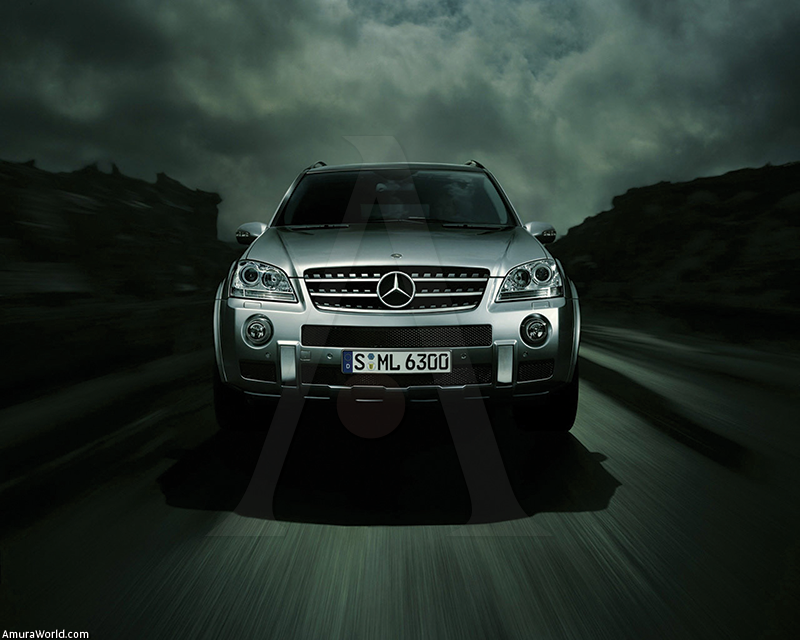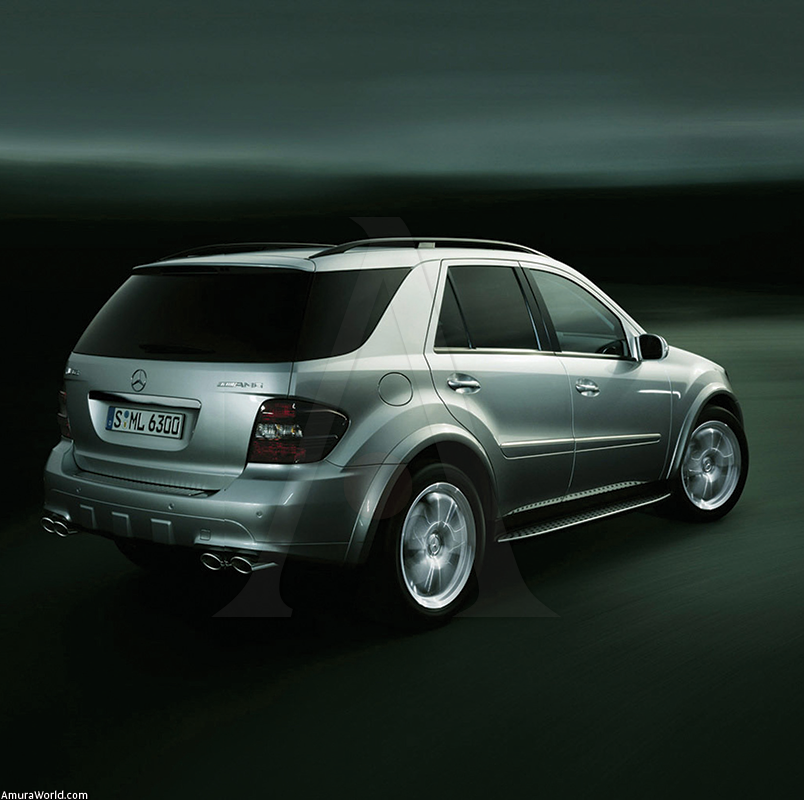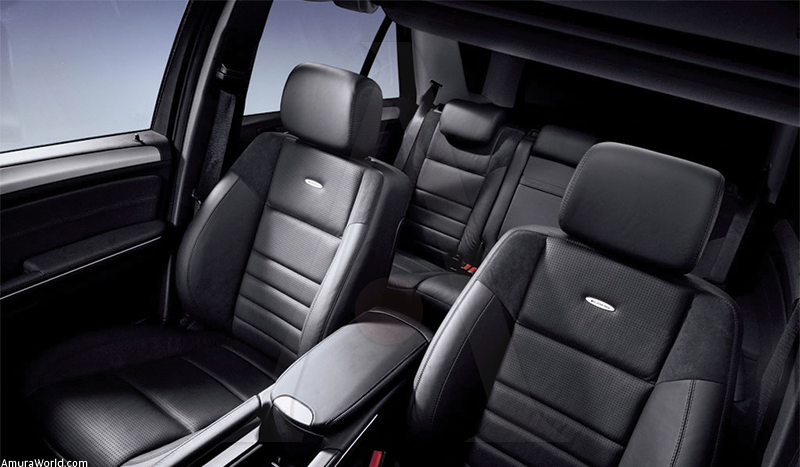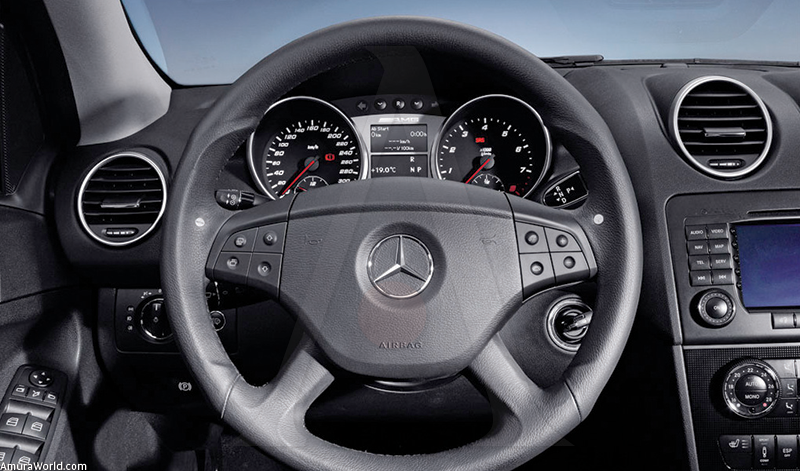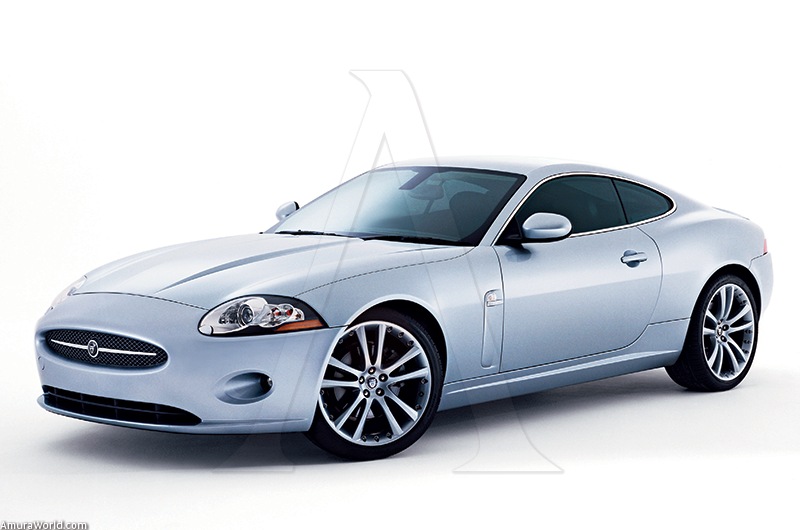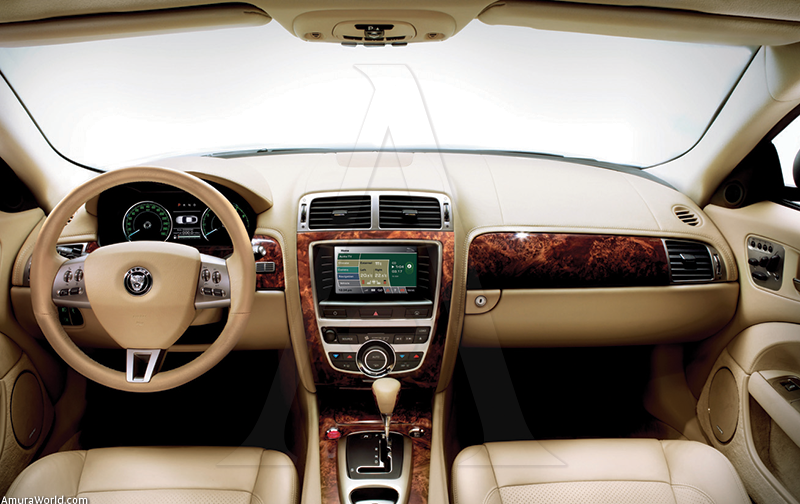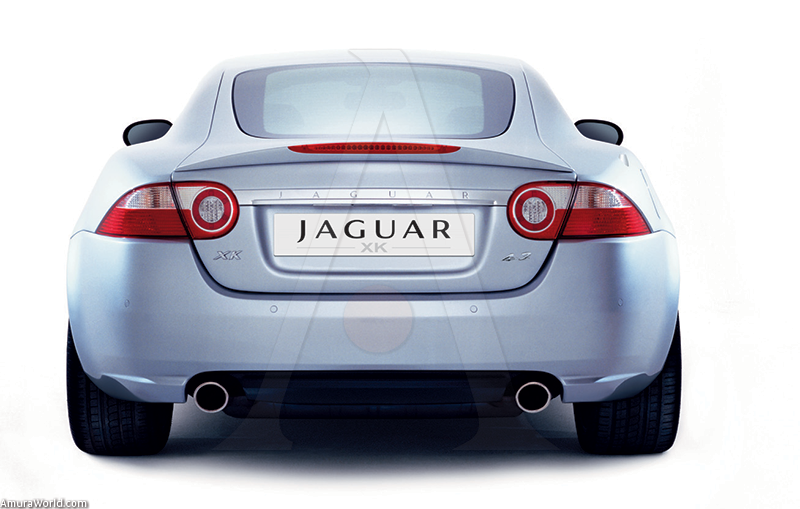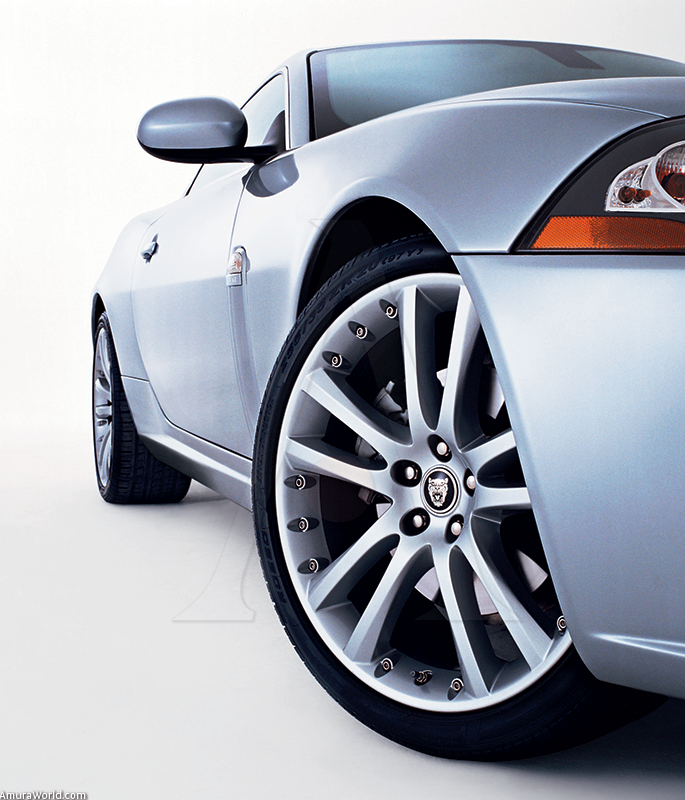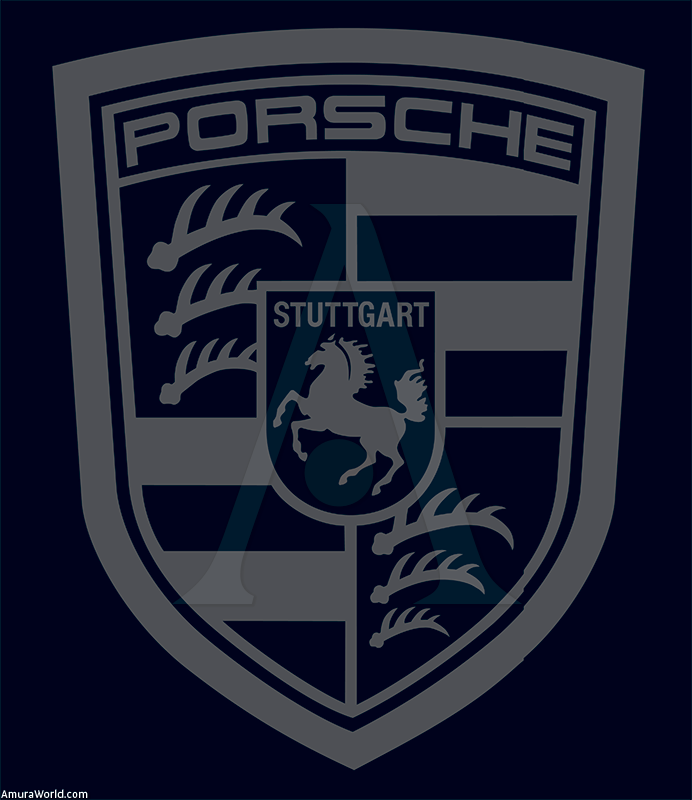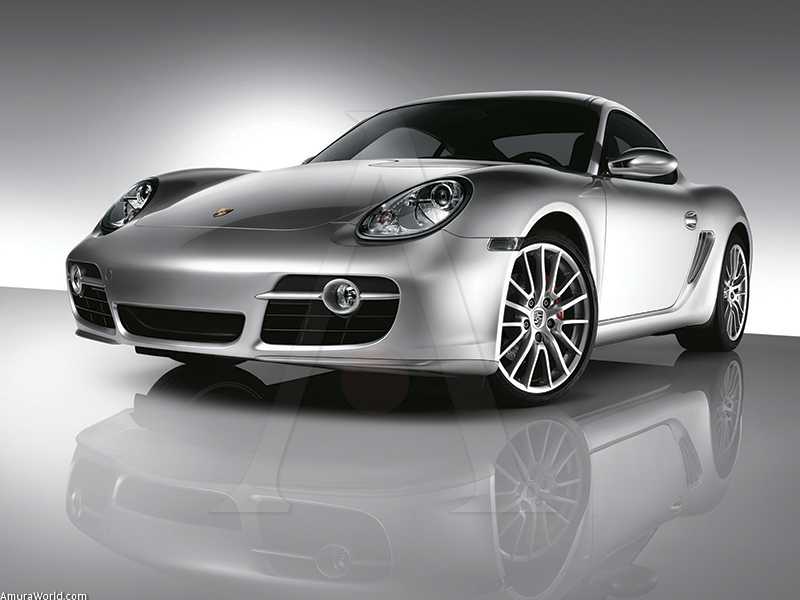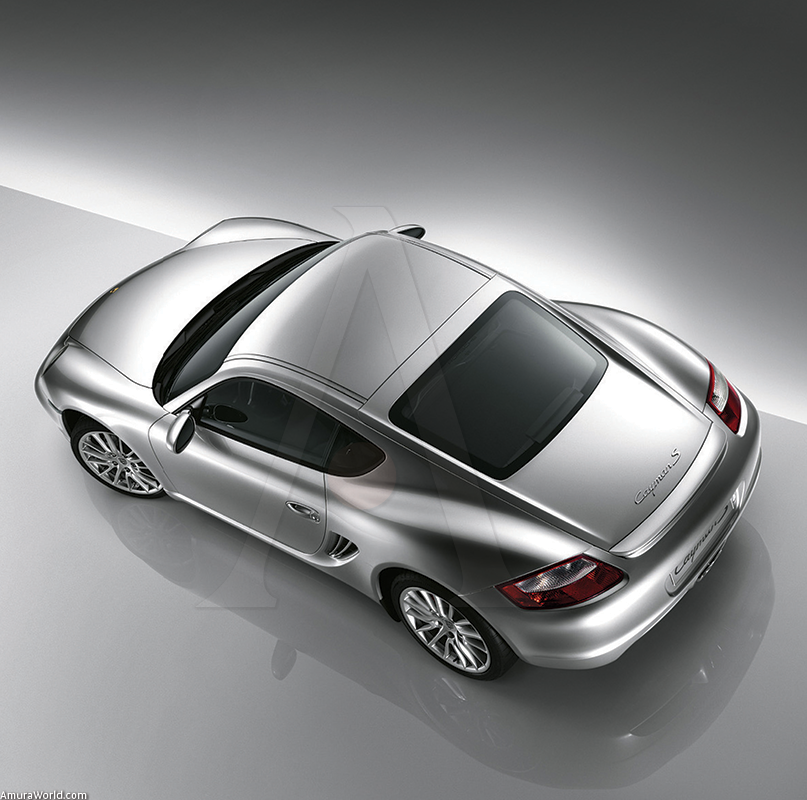Frankfurt Autoshow
This is the time of year for automotive news to be coming out of Germany and the reason is the Internationale Autom6vil-Ausstellung, better known in these lands as the Frankfurt Autoshow.
Each year, Germany and France take turns organizing their respective car expos, and this time the German brands laid out the money to show them- selves off on their home turf.
We are presenting two Germans and one English gentleman on these pages. They made their world debut during this event, which took place this past September. The show was highlighted by alternative energy and non-petroleum based proposals that control three quarters of the market.
Popular belief sees automobiles remaining the most important means of transportation. That is why we must assure that vehicles evolve in accordance with the world's needs and to plan ahead for a mini- mum of 30 years.
Mercedes-Benz
ML63 AMG
When a vehicle is placed in the hands of Mercedes' own artisans, the results are always flattering. This time around, it is the M class' turn: AMG’s factories have transformed this model into a first rate athlete.
It comes equipped with a carefully fine-tuned 6.3 liter V8 engine that offers up 510 HP. This is a high RPM engine that combines the best of both worlds: the exhilaration of comfortably moving in the 6000 RPM range and powerful torque at low speeds.
Such a power plant allows the ML63 to position itself in a spot that even some sports cars would envy. Proof of this is its electronically limited 250 km/h (155 mi) top speed as well as the 5.0 seconds it takes to reach the academic 0 to 100 km/h/0 to 62 m.
The power reaches down to the asphalt through an AMG Speedshift 7 G-tronic seven-speed transmission with three operating modes: Sport, Comfort and Manual. The four-wheel drive is a constant, but to achieve optimum stability in a variety of terrain conditions, the power can be distributed between the two axles.
AMG’s special touch is not limited to the engine; it is also present in the exterior. This is apparent in the design of the 19-inch wheels and the aerodynamic appendages, which accentuate the character of the ML63. The ear is also important the exhaust system, in addition to increasing the engine’s potential, is aesthetic and has dual pipes that boost to the car's sporty line.
This sporty theme is carried on into the interior. Leather sport seats and details like stainless steel on pedals and handles guarantee that the driver will always be in a good mood and will want to get the most out of this creation.
AMG’s engines are always the objects of praise because only one man, under the strictest of standards, assembles each. That is why each motor bears a plaque with the signature of the mechanic who gave it life.
| Engine |
| V8 |
| 6.3 L |
| Horse power |
| 510 |
| Time from 0 to 62 mph |
| 5.0 seconds |
| Top speed |
| 250 km/h (155 mph) |
Jaguar
XK
This vehicle is an example of how a concept car can finally see the light on the assembly line. The Jaguar XK is nothing less than the market version of a concept car that, two years ago, was called Jaguar Lightweight Coupe.
As in the days when Jaguar dominated the tracks, the objective of the XK is to stand firmly and look straight to the future. While the car evokes a few traits of those Jaguar legends, it is also the standard-bearer of the brand's new era, both in design and engineering, as it is the most technologically advanced car the English firm has ever marketed.
It has a radical look and some might say it does not even look like a Jaguar. However, if we look back at the 60’s, we see that the essence is there, with many features inspired in the shapes of the Jaguar Type E.
Starting with a blank canvas, Jaguar was able to use state-of-the-art technology in conjunction with its traditional qualities to create a luxurious, powerful ensemble that will, most surely, become the hallmark of the brand's sporty temperament. One of the main selling points is the aluminum mono-hull type platform, which is used in this model and improves the rigid torsion of its predecessors with a 10% increment in the weight-power ratio.
It comes equipped with the latest generation of engines, a 300 HP Jaguar natural aspiration V8 that reaches 0 to 60 MPH (0 to 100 kilometers) in 5.9 seconds, only seven decimals slower than the super- charged XKR. The complement to the XK is a six speed sequential transmission, which can be operated from the controls behind the steering wheel to attain a top speed that, like any true gentlemen, is limited to 250 km/h (155 m/h).
In the interior, Jaguar has focused on those small details that make life pleasurable. These include key- less access, active illumination and even a switch for lights that accentuates its sportiness.
It will be available at the start of 2006. But beware! Jaguar has announced a convertible version of the XK, so it would be better to control any sudden impulses now.
| Engine |
| V8 |
| 4.2 L |
| Horse power |
| 300 |
| Time from 0 to 62 mph |
| 5.9 seconds |
| Top speed |
| 250 km/h (155 mph) |
Porsche
Cayman S
Porsche now has its new coupe on view in its showrooms. It is sharing the stage with the Boxster and, at first glance, looks exactly like it. It is the missing link between the Boxster S and the Carrera 911.
It is a two-seater with a central engine that is quite unusual: it utilizes the stability of the Boxter*s drive position, combinGd with the increased rigidity of a roof like that of the 911.
The Cayman S accelerates to lOOkm/h (60 mi/h) in 5.4 seconds, taking advantage of its 3.4-liter displacement and the 295 HP that comes from the traditional Porsche engine featuring six opposing cylinders.
This lets drivers take the speedometer to 275 km/h (171 mi/h), confident in the safety afforded by the excellent weight distribution which results from the power plant being located in front of the rear axle. The shape of the front end of the Cayman is outstanding: its designers included details that were inspired by the 1950 models, for example, the independent fog lights and ample, curved roof which give it its own personality, lb top it all off, the rear window continues to form a wing that ends in two centrally placed exhaust pipes.
The Caymen's suspension is firmer than the Boxter*s and the engine’s neutral weight lets you really feel the difference when negotiating curves.
The Cayman has a really unique luggage compartment that is not a feature of either of the Boxster or the 911. When you raise the rear window you find a space divided in two levels with stainless steel molding. The Cayman has a capacity for up to 250 cubic liters (295 cubic quarts) that, in addition to the 150 (177) of the front compartment, make the Cayman functional, sporty and with a performance that sets an example to follow.
| Engine |
| 6 Cylinder boxer |
| 3.4 L |
| Horse power |
| 295 |
| Time from 0 to 62 mph |
| 5.4 seconds |
| Top speed |
| 275 km/h (170 mph) |
Text: ± Photo: Mercedes Benz. Ford Motor Company México, Porsche



